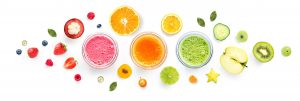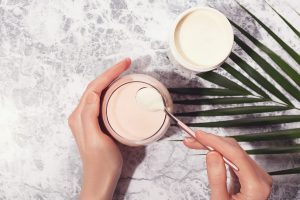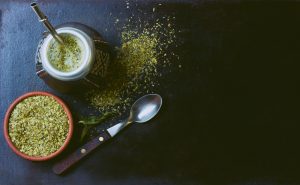
Are all of our dreams coming true? Is there a powerhouse ingredient that aids in keeping us younger, more agile, looking better, and all around healthier as we move into our later years in life? All accounts point to YES, and to collagen.
The average adult is made up of 60% water, and it’s essential for life so why are we just now recognizing that collagen is the most abundant protein in the body that’s found in bones and connective tissues? Look at it this way 20% of body mass is protein, and 30% of protein is collagen. Collagen is vital in connecting muscles to bone, where massive tensile strength is required to withstand enormous forces so that it can be stretched without tearing. In fact, type I collagen fibrils are so strong they are stronger than steel gram for gram. (Uhh shouldn’t we all feel like Superman?) Think of collagen as the cement that holds us together – to give you a little idea.
Most people are familiar with collagen in the cosmetic sense as an ingredient in skin-care products, but the health and wellness industry is moving more and more toward beauty from within. In Asia, consumers have been partaking in collagen enriched food and beverage for over a decade. In America, it’s finally on the verge of going mainstream and has gained traction in not only beauty, but joint, bone, muscle support, sports, and digestive health markets too.
To understand why it’s become a sweetheart of sorts in the industry lets take a couple of steps back dive in a little deeper.
What is this Ingredient of Steel?
In short, collagen is a protein and is derived from animal parts, typically bovine/beef or fish/marine. It comes from the connective tissues which are the very thing it helps rebuild when consumed. (Yeah, we don’t like to think about gnawing on animal bones either.)
For a while, it was a backseat driver because it was ranked as nutritionally “incomplete” since it lacks the amino acid tryptophan. So how exactly does it work? Unlike other nutrients collagen enters the systems as a peptide fragment rather than a full-length protein and when the cellular receptors that are prepared to detect complete protein instead intercept these shorter fragments, they say “hey, wait a minute our body’s collagen is being broken down we need to ramp up production and make some more!” So in other words, collagen isn’t providing the building blocks for production, but rather an incentive for the body to make more. Who knew something so sneaky and ingenious would work so well?
The Almighty Collagen
In the opening paragraphs we gave a little insight into how vital collagen is for the body, but let’s get down to the nitty-gritty, what is it really good for?
Well, to start, there are 16 types of collagen, but 80-90 percent of collagen in the body consists of types I, II, and III. So while the common goal of the structures they form is to fortify the body’s connective tissues each one of these babies have some unique qualities that set them apart.
Type I collagen:
- This is the most abundant and most robust of the three found in the human body
- Type I is located in tendons (those connective tissues we talked about above), and this is also the guy that is stronger than steel – makes us superheroes remember?
- Type one is key in wound healing and,
- Important in bone formation
Type II collagen:
- This is the primary collagen found in cartilage
- Is essential for the immune system and digestive health
Type III collagen:
- Found in connective tissues such as the skin, lung, intestines, and vascular system
- Gives skin resilience and firmness
- Forms our blood vessels and cardiovascular tissues
Consumers Madly Consuming
So why are these consumers going cuckoo for collagen? Because recent scientific evidence confirms that better results are achieved when collagen is ingested orally rather than applied topically creating a host of new opportunities for the food, beverage and supplement manufacturers.
Consumer want:
- Anti-aging effects
- To improve skin elasticity
- To reduce cellulite
- To heal inflammatory conditions on the skin and within the body
- To improve digestion and treat conditions such as a leaky gut
- To improve wound healing, and wear and tear on joints
- And, to keep their pet’s healthy too!
Pets Can Benefit Too
Yes, you read that right collagen isn’t just for humans. Our pets depend on us to provide for them, and that includes nutrition to keep our most loyal four-footed friends happy and healthy as they age too. Two species that suffer from joint issues the most are dogs and horses. Its hard to watch our pets go from jumping and running to limping and napping and that’s why collagen supplementation is a practical solution to assist in lessening or even repairing the pain and damage that our pets endure as they age. Collagen doesn’t only help with joints but has been shown to improve skin, fur, and nail health as well as the maintenance of strong, healthy muscles.
As an odorless, tasteless powder that quickly dissolves, remains stable in solution, tolerates a range of processing temperatures, storage conditions, and formulation environments, collagen ingredients are incorporated into endless different forms – meat bars, coffee creamers, dessert bars, beverages, shots, jellies, confections and more. Health and wellness influencers are even developing their own DIY collagen gummies and chews.
It’s not hard to see why collagen and all it’s popular edible and drinkable applications are here to stay so if you were looking for a sign of whether to jump on the collagen train this is it. The time is now because there is a bright future ahead for the collagen market and it’s just getting started.




